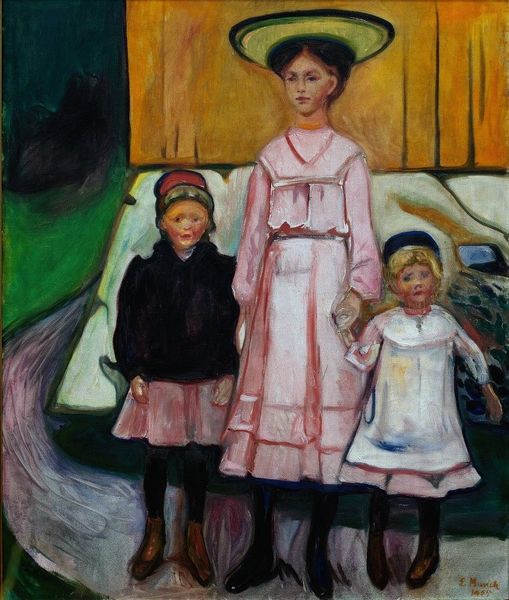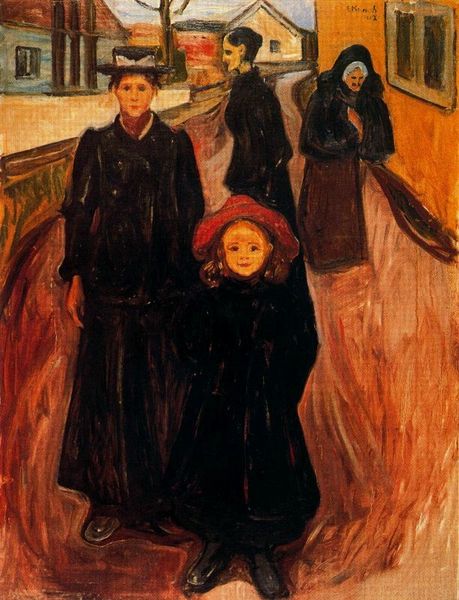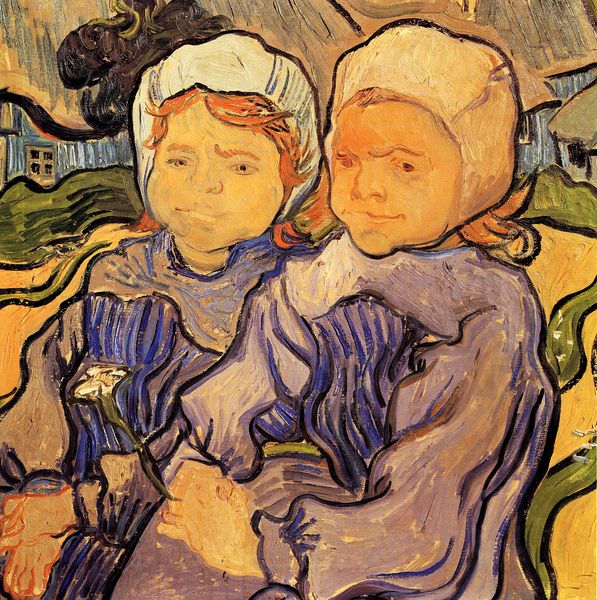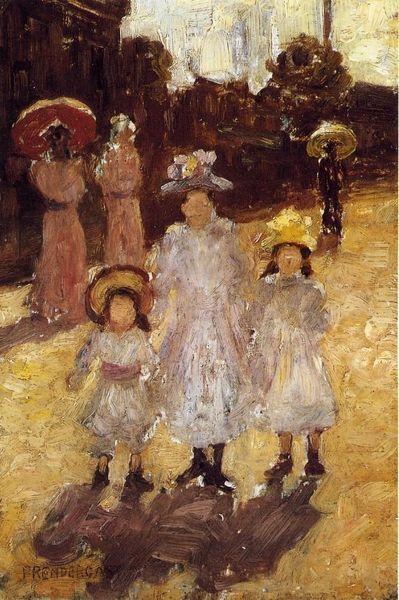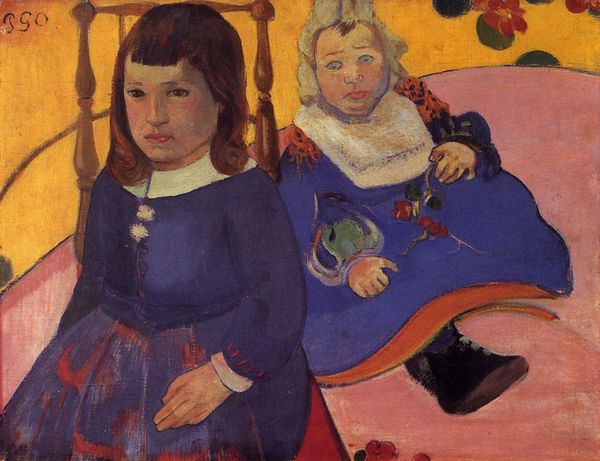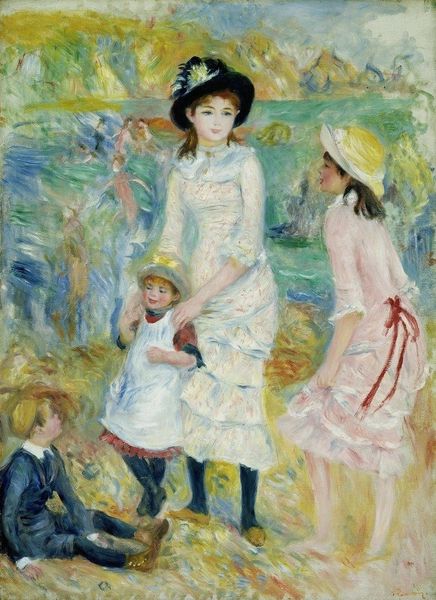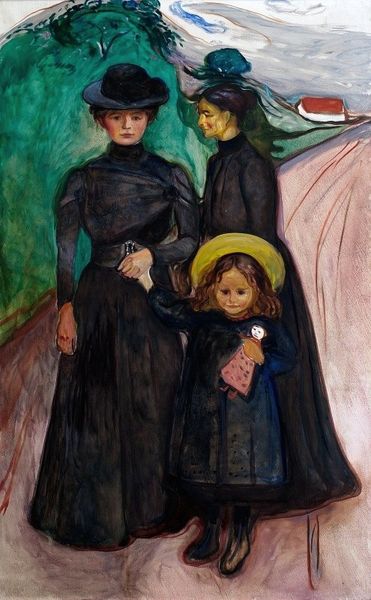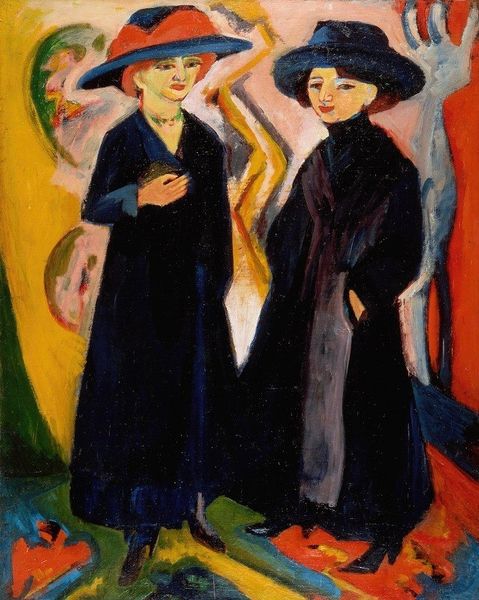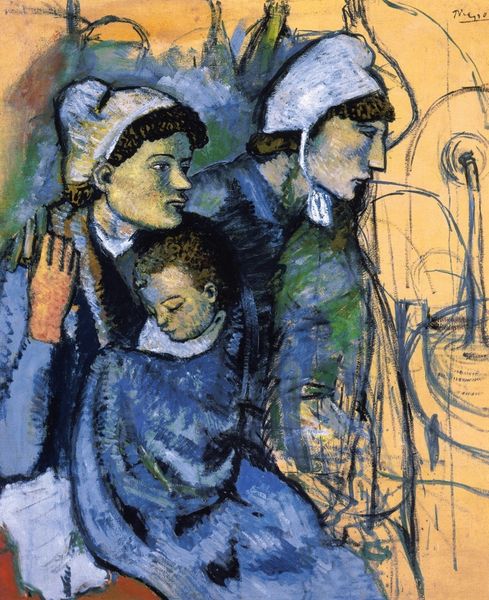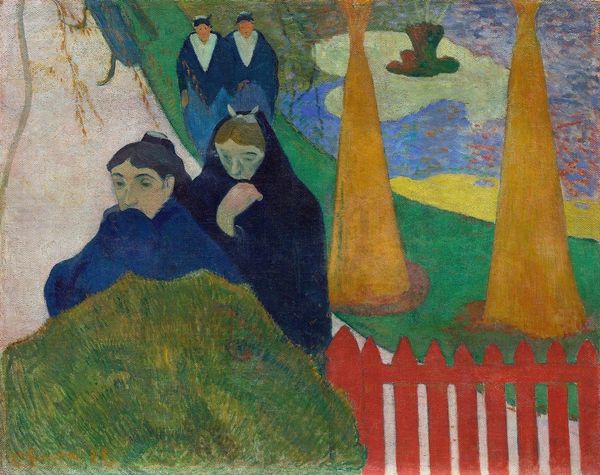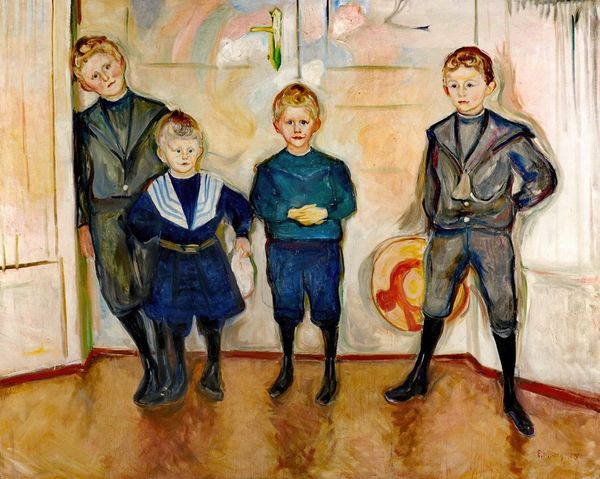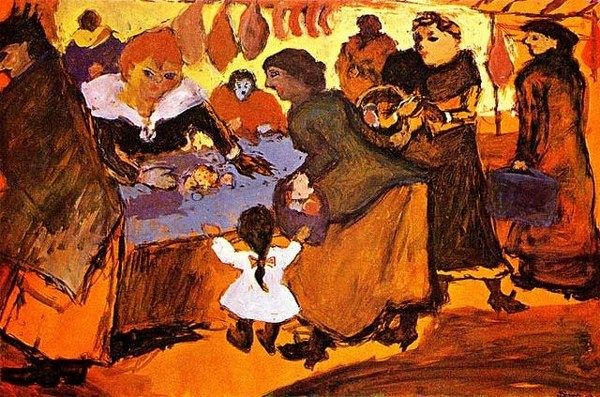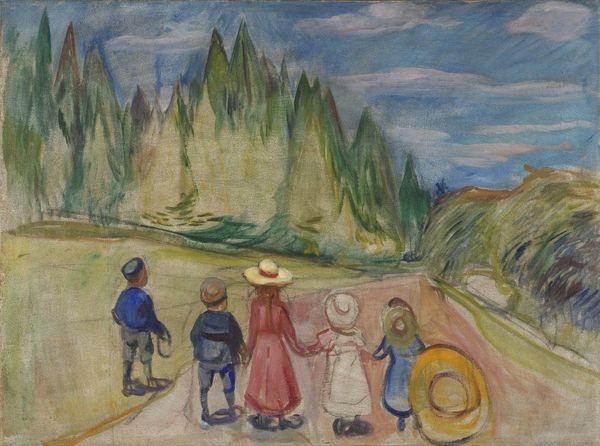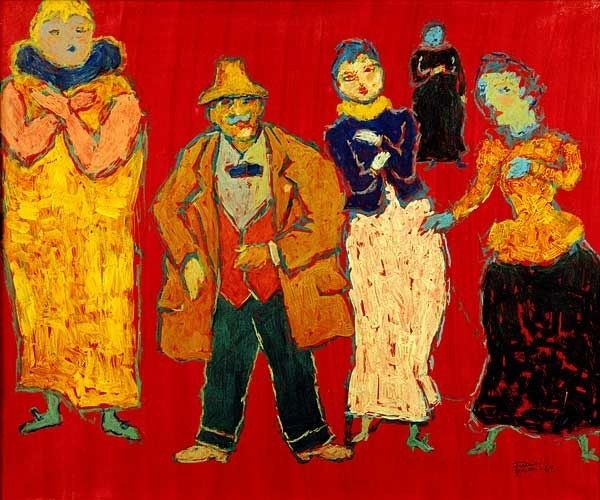
Dimensions: 87 x 111 cm
Copyright: Public domain
Editor: We’re looking at Edvard Munch's "Four Girls in Åsgårdstrand," created around 1903 using oil paints. It strikes me as almost unnervingly formal for a group of children; their expressions and poses feel very deliberate, not spontaneous. What's your interpretation of this piece? Curator: Well, I think you're right to key in on that deliberate quality. Rather than a straightforward portrait, Munch uses the girls to explore themes prevalent in his wider body of work: adolescence, societal expectations, and a certain existential unease. The painting comes at a fascinating point in Norwegian history. Can you think how burgeoning nationalism mixed with complex social mores could impact young women in that era? Editor: I can imagine that rapid societal changes, with the rise of the independent state and modernization, must have put pressure on women in particular, about upholding traditional values or forging new identities. Curator: Exactly. These girls, poised on the edge of adulthood, become symbolic of Norway's own uncertain future. Their stillness might suggest constraint, yet Munch's vibrant use of color hints at an underlying dynamism and potential. Notice the ways that gender and class dynamics come together, not just visually, but emotionally. Editor: It's interesting to consider how much weight these young figures are carrying, beyond just being a picture of four girls. The emotional tone suddenly seems much deeper. Curator: Precisely! It reminds us that even seemingly simple images are always embedded within layers of social, historical, and personal narratives. We learn to truly see, when we begin to critically question our presumptions about representation itself.
Comments
No comments
Be the first to comment and join the conversation on the ultimate creative platform.
